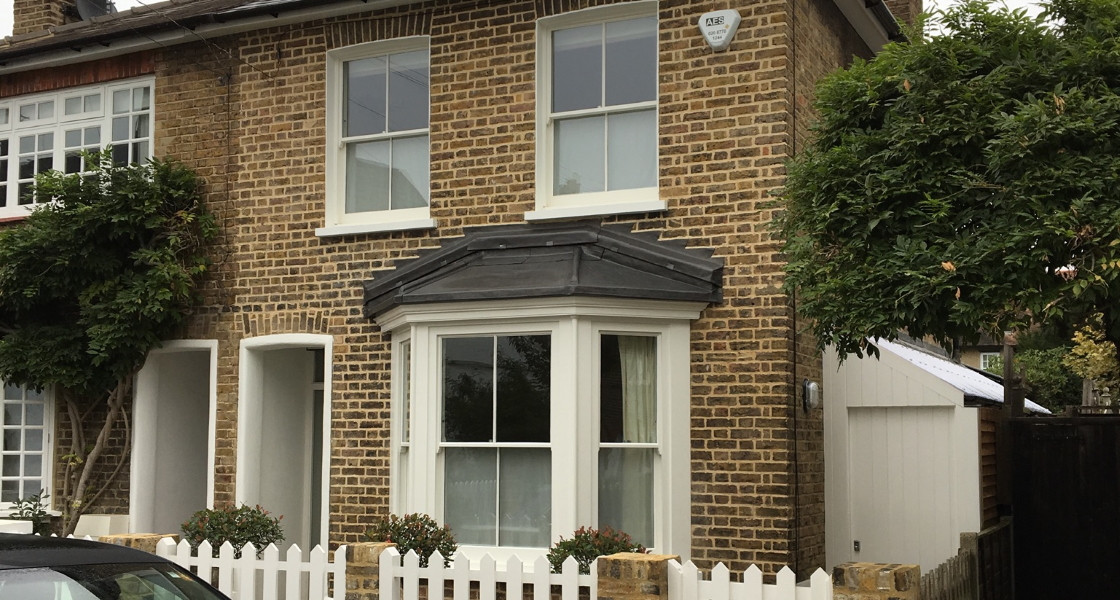Today’s London is a vibrant tapestry of different architectural styles. Dynamic ultra-modern designs are nestled against familiar city townhouses. However, when it comes to refurbishing or extending a property, it helps to know the details, such as whether that townhouse is Georgian, Victorian, or Edwardian. Do you know the difference? If not, read on!
Georgian
Think of the literary and TV classic ‘Pride and Prejudice’, and you’re picturing the Georgian era. It was a time of elegance, formality, and balanced design. Georgian townhouses are characterised by a double-fronted visage with cream stucco, and usually have between three and five storeys. A balcony above the ground floor is a familiar feature, as are the archetypal sash windows. In Georgian homes, the upper levels have lower ceilings, while the ground floor and first floor rooms have an abundance of space and light, amplified by the natural geometry of the layout.
Visit Knightsbridge, Camden, and Kentish Town for some fine examples of sympathetically restored Georgian properties.
Extending A Georgian Property
Georgian properties tend to be terraced, with either no garden or a small courtyard. As such, the preference is to burrow downwards into a basement extension. Georgian properties also benefit from opening up the space by removing unnecessary walls, although this may upset the integral balance. Original features abound in these homes, and honest renovation is a market winner.
Victorian
The Victorian era is synonymous with industrial creativity. Railways, mills, and engineering transformed the British landscape. This bold step into the future is echoed in domestic architecture. Taking the red brick as its statement colour, Victorian properties were formidable, imposing, and adorned with period features such as bay windows and pitched roofs. The design focused on individuality, so whole streets may have no two houses that look alike.
Camberwell and Brockley have some stunning examples of the Victorian vision in action.
Extending A Victorian Property
The most familiar extension to a Victorian property is a conservatory; however, these are usually very hot during the summer, and very cold during the winter, so recently more people have been turning to either a modern extension to contrast the old house, or an extension using similar materials, to mimic the existing property. The house will always benefit from a lot of light, so lots of glazing in the extension is a must. It is also worthwhile extending upwards into the attic if this has not already been done, as this is a significant space that is often overlooked. Victorian properties almost always benefit from an open-plan design, as their narrow footprint can otherwise create a sense of darkness.
Edwardian
Sometimes referred to as ‘Victorian with Frills’ the Edwardian era is an artsy take on the typical Victorian design. The homes were the suburban solution of the early twentieth century, and reflected the growing demand for privacy and healthy living. This meant front gardens, rear gardens, and plenty of space. Characteristic features include mock-Tudor cladding and artful porches. Early Modernist features such as elegant stained-glass windows also start to appear during this era.
For a fine display of Edwardian housing, head to Hampstead or Muswell Hill.
Extending An Edwardian Property
With all of the land that an intact Edwardian property typically sits upon, extending outwards is rarely an issue. There is also ample opportunity for loft conversions, as well as for extending above a garage. With sizeable interiors, Edwardian homes rarely benefit from creating an open-plan effect, although altering the upstairs layout can offer the opportunity for en-suites and enhanced value.
What Next?
Parker Developments has an extensive portfolio of extensions to Georgian, Victorian, and Edwardian properties in London. For more information about how to sympathetically increase the footprint of your property, get in touch with one of our home refurbishment experts today.
